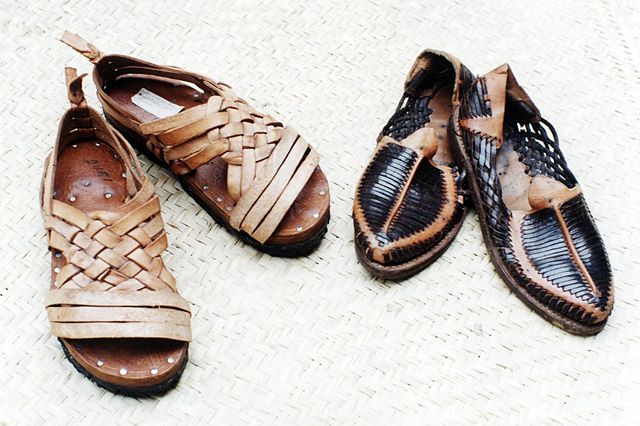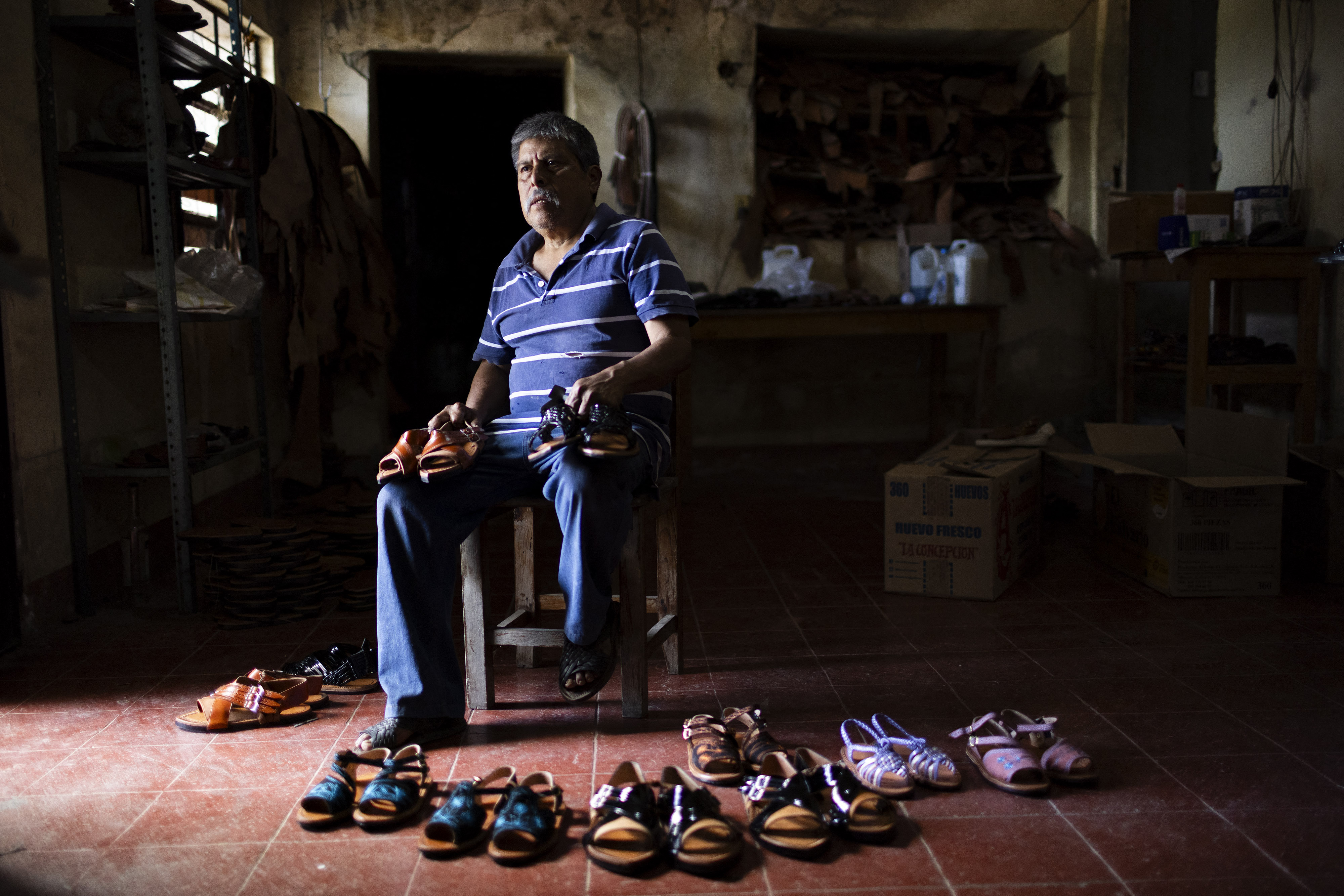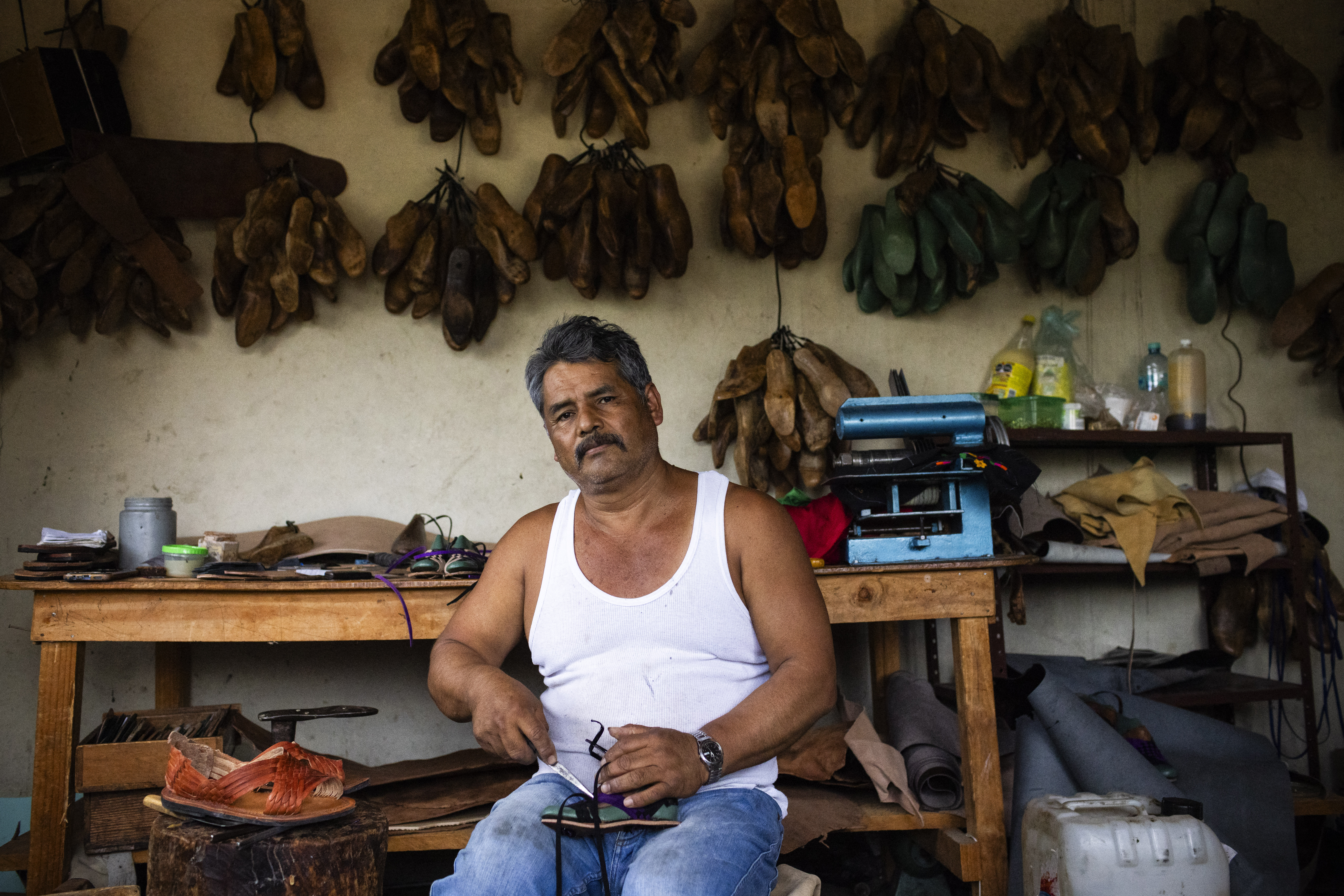Why Adidas' Oaxaca shoes got the Prada kolhapuri-treatment in Mexico

Adidas’ Oaxaca Slip-On elicited the same response in Mexico as Prada’s kolhapuri sandals did in India. The sportswear giant was under fire from Mexican officials and craftsmen. They accused the brand of appropriating the design of Mexican huaraches.
A hallmark of Mexican culture, huaraches have been a part of the heritage of the indigenous people of the region since before Columbus came to America. Interestingly, similar designs are common in India as well. In fact, Nike also has a Huarache shoe, inspired by Mexican huaraches.
What is a huarache?
 Image credit: Wikimedia Commons
Image credit: Wikimedia Commons
Huaraches are known for having narrow bands of leather. These are sown into the sole, and then inter-woven to create the top of the shoe.
There are many variations of the design based on the landscape and weather of the region that specific huarache is from. In addition to that, there can be variations in material as well. So, huaraches can be made of plant fibre, not leather, in some cases. The sole can also be made of rubber, wood, and lots of different materials.
Regardless of that, one thing remains constant. For it to be called a huarache, it should be handmade by artisans who are trained in the artform of creating this footwear. This is why not everything qualifies as huarache, even if it looks similar.
Where are huaraches from and why is it historically significant?
Traditionally, huaraches were worn by people in the farming communities of Jalisco, Michoacán, Guanajuato and Yucatán in Mexico. It was originally a simple sandal with a ‘pata de gallo’ weave.
Following its origins as footwear for farm-workers, it evolved. So different types of huaraches came into existence, indicating the status and identity of the wearer.
Unfortunately, during and after the colonization of the Americas, a lot of the history of this region was lost. That is why whatever remains is very important. After all, the articles people wore throughout history carry stories of their life and times.
Mexican craftsmen and officials on Adidas using huarache designs
 Image credit: AFP
Image credit: AFP
Adidas was critiqued by the Mexican government even though the item was created by designer Willy Chavarria, who has Mexican heritage. This is because huaraches are a historic, hand-made item that Mexican artisans labour hard to create.
Mass-producing a product that is part of a country’s heritage, takes away the livelihood of the people who traditionally hand-crafted it.
Craftsman and huarache-maker Raymundo Cuevas told AFP, "The problem we have had lately with the plagiarism of one of our models by a company called Adidas has left us upset,” adding, "It is not right for a company to say, 'This is easy, I'm going to copy this model and make money from it.'"
Craftsman Antolino Dominguez echoed his statement, telling AFP, "They copied the woven design, and we were upset, very upset, and I'm not the only one; almost everyone, the majority, felt the same way."
 Image credit: AFP
Image credit: AFP
Antolino also talked to AFP about how the craft helps feed generations of families: "We support our entire family from this, it comes from generations of our ancestors. This work they copied has been honed over years, around 150 years of dedication to making it."
Oaxaca Governor Salomon Jara was among the first people to speak out. He said the "reinterpreted" huaraches were integral to the culture of the Hidalgo Yalalag village in Oaxaca: "This huarache is from Yalalag...we are also going to ask our Yalalag siblings to work with us so we can file a complaint"
Even Mexico’s President Claudia Sheinbaum stepped in. She said in a press conference: "It's collective intellectual property. There must be compensation. The heritage law must be complied with,” adding, "Big companies often take products, ideas and designs from Indigenous communities ... We are looking at the legal part to be able to support them."
Why Adidas’ Oaxaca Slip On was taken off shelves
The shoe’s designer, Willy Chavarria, made an apology that said: "The intention was always to honor the powerful cultural and artistic spirit of Oaxaca and its creative communities - a place whose beauty and resistance have inspired me. The name Oaxaca is not just a word - its living culture, its people, and its history. This falls short of the respect and collaborative approach that Oaxaca, the Zapotec community of Villa Hidalgo Yalalag, and its people deserve."
Adidas also apologised and took the shoe off its shelves. Their statement said: "The 'Oaxaca slip-on' was inspired by a design from Oaxaca, rooted in the tradition of Villa Hidalgo Yalálag. We offer a public apology and reaffirm our commitment to collaborate with Yalálag in a respectful dialogue that honours their cultural legacy."
This matters because it's proof that fashion is more than just something you wear.
The importance of acknowledging the history of fashion
The Oaxaca Slip On is just one example of an element of a certain culture being picked up and mass-produced by a conglomerate. The Nike Huarache and the Prada kolhapuri chappal are others.
There are many other things, from items of clothing to food, which are consumed by everyone without knowledge of their origins or history. Most often, this leads to the erasure of the culture of marginalised groups.
If the world continues to consume without cultural context, where will that eventually lead society? In 50 years, will we be wearing and eating products without any awareness of the history and heritage behind it; the history that we all come from?
After all, fashion isn’t just about trends. It’s about craftsmanship, artistry, storytelling, and narratives. Fashion, like many art forms and elements of culture, houses culture within it. So, will fashion have a soul if it tells no story?



